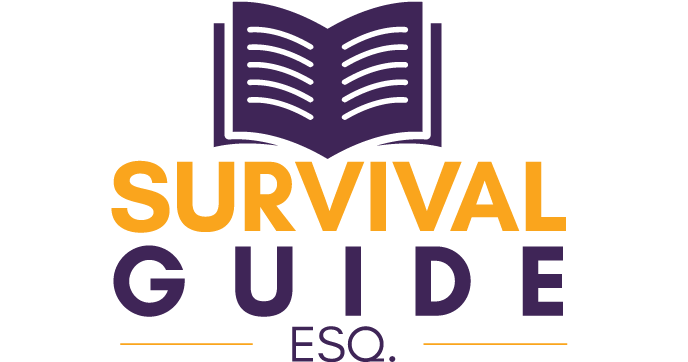Good lawyers don't only point out problems, they offer solutions

Photo illustration by Sara Wadford/ABA Journal
I’ve worked with several executives who simply hated lawyers—outside lawyers, in-house lawyers—no matter. Their common source of ire: They felt they’d spent years paying lawyers handsomely for opinions, and in return too often received middling, equivocating advice that implied an unwillingness on the lawyer’s part to “get in the boat” with them and take a stance helpful in decision-making.
I’ve had to ask myself the hard question: Is this take unfair?
Legal education sometimes feels like waterboarding the free will instincts out of our bodies. Despite having well-founded opinions throughout our lives up until law school, now the client seems to be the one that must make all the decisions, have the opinions and generally exercise autonomy. As early lawyers, we’re made to recite ABA Model Rule 1.2 ostinato while a steady tourniquet is applied to our opinion muscle as to the consequences of straying outside our decision-making lane.
I’m here to tell you the cautionary tales are true about where ultimate power lies: the client. But that’s not the whole story. Understanding how to give an unfettered opinion and drive the client’s decision-making can make the difference between great lawyers and those seen as just OK. With smart guardrails, you shouldn’t be afraid to loosen the strict restraints on your opinions—because at the end of the day, your client wants to know what you think.
 Tracey Lesetar Smith
Tracey Lesetar SmithKnow your client
To give useful opinions, you need to know who you’re dealing with. It dictates how you answer your client’s questions, the amount of detail you give them and how involved they want you in their decisions.
Character 1: The businessperson who moves fast and occasionally breaks things. This person wants your complex issues to be made as simple as possible. They don’t want to be patronized, but they want to be told where landmines are and the best road to avoid them. Is your issue nuanced or simple? Lots of tentacles or one big hurdle? Doesn’t matter. You have three minutes to lay it out. If you get in the weeds, you’ve lost them. So your advice and opinion need to be concise, easy-to-follow and break complicated concepts down quickly. They will be frustrated if you give a dissertation on legal concepts without proposed courses of action. And if they have to hammer you for your opinion, those are dangerous waters to tread if you want access to them in the future.
Character 2: The general counsel with a big organization and zero time for nonsense. This applies if you are outside counsel or in-house working on a team with a lawyer as executive leader. This character’s best resources for you: Appreciation of legal nuance, familiarity with your lingo and insider information on the business dynamics/politics. Their scarcest resource: time.
You’ll need to strike a balance between detail and oversimplification with this key executive, but they still want a point of view and a relatively concise opinion. Unless they ask for it, don’t hand them a five-page memo with citations. If you’re asked for an opinion, don’t rehash the legal issues and then say, “It’s up to you, whatever you want to do.” This is a chance to serve them what you think with a side of risks involved. (Side note: I am admittedly Character 2. With either a big team to supervise or a small team inside a big org where I wear many hats, I sadly have no time for seven-page memos unless I’ve requested them.)
Character 3: The cautious driver who wants the nitty-gritty. This can be a lawyer or nonlawyer client. They have an appetite for the details, want to engage in lengthy conversation about them and weigh every aspect. You will rarely be in a position of shortcutting an answer, truncating a summary or missing any opportunity to outline even unlikely risks. Their love language is walking them through every aspect of the problem, leading them to your ultimate point of view on options.
Get in the boat
You know which client you’re dealing with now? If you want to truly be seen as a businessperson’s lawyer, you have to get in the boat with these decision-makers. Put yourself in their shoes. Show them you understand the consequences and share their concerns. Act like you’re on their team, rowing together, not just a mercenary for hire.
Of course, you have a responsibility as a practitioner to cover yourself, especially if you feel your client is either a) unwilling to hear you out on dangerous risks or b) a litigious type apt to point fingers at you when they’re put on the hot seat down the road if one of these hypothetical risks come to pass.
That said, if your advice equivocates so much that the client senses you’re worrying solely about covering your own hind parts or senses your paralysis due to imperfect information, you might not only lose client trust, but you also won’t be helpful to them. If you suspect you have a challenging client in category a) or b) above, still give them your opinions according to their character type. Then consider sending a well-written but concise follow-up summary to backstop. No matter what, you’re part of the “us,” “we” and “team” that is the client. Act accordingly.

Paint a picture of values
As a Character 2, my pet peeve is an expert laying out three or four possible courses of action, then throwing their hands up on solution— “I don’t know, that’s your decision. Good luck!” First, it feels like they’re not “in the boat” with me; and second, I may have my own lens and frame for the problem—but I’m paying you to hear yours.
Good lawyers show clients not just problems, but also possible solutions. A mentor of mine loved solutions “in sets of three.” I agree with his rule of thumb, and it works for all three characters above. Consider laying out three courses of action for the client—how detailed depends on their character.
Now what? You’re not done. If there isn’t an obvious great choice (and even when there is one), frame each one for the client through values. For example, “If you don’t care about X risk right now and want speed, I might go with the first option.” Or perhaps, “If our focus is long-term growth and we’re willing to bear the public relations hit for the next three months, I might choose the second option.” You might even say, “If we don’t want to deal with any of this and we have the financial resources to make it go away, perhaps the third option is our best course.”
You see? You’re in the boat with them, and you’re giving ownership mindset to boot. (See “Think Like an Owner,” June-July, page 16.) It’s still their decision, but in giving your opinion, you’ve shown them the highway exits to take, depending on their compass. That’s added value.
No crystal ball? No problem
Great lawyers are comfortable saying: “We just don’t know how that will pan out.” Business leadership necessitates comfort with imperfect information, with ambiguity. Your clients understand that conundrum. They deal with it often. In playing out possible scenarios and options for them, paint a picture of what is clear and point out parts that will remain blurry until the “big reveal.” They’ll usually respect your honesty.
One last bit of advice: The more you know your client’s business, the better your opinions will be and the more they will be able to trust them. Invest in your own business education. It will pay off.
This story was originally published in the August-September 2024 issue of the ABA Journal under the headline: “Bite the Bullet; Give an Opinion: Good lawyers don’t only point out problems—they offer solutions.”
Tracey Lesetar-Smith is CEO of TLSK Advisory and a seasoned sports and entertainment executive with over 20 years of experience, including as general counsel of NASCAR and general counsel of Bellator MMA.
Survival Guide, Esq., offers advice for early-career lawyers through a partnership between The ABA Journal and the ABA Young Lawyers Division. The authors of the column welcome any of your questions. You can send them to [email protected].
This column reflects the opinions of the author and not necessarily the views of the ABA Journal—or the American Bar Association.



